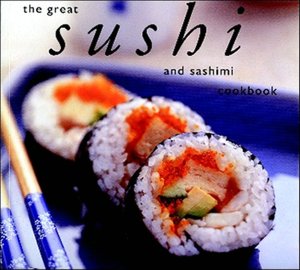To get one's hands wet for homemade sushi, I often recommend chirashi (trash, or scattered) zushi, for several good reasons. It's basic, simple, accessible. It can be a lunch bowl, or treated as a side salad, with no pressure to create culinary masterpieces....
I don't mean to take anything away from your comments because I agree that
chirashi is certainly easy to make. However my personal experience is that rolls are so easy to make as to be one of the easiest techniques I've learned, even with the first couple of rolls I ever made, perhaps not artistic masterpieces but certainly fully edible and tasted as good as any rolls I've ever eaten in Japanese restaurants.
(ETA: You will need a good sushi rice recipe irrespective of whether you make
chirashi or rolls.)
The most important thing is to get the bamboo mat. They sell them in supermarkets in L.A. and I presume over most of US, and mats are almost disposable at their insignificant cost, or discardable after several uses if they get worn or dirty. Perhaps $3 at the market.
The most important part of the technique involves positioning the
nori at the bottom edge of the mat, spreading the rice at the bottom of the
nori and leaving a margin at the top (to overlap), and judging how much rice to use (how thick to spread it). Additional, add some wasabi spread over part of the rice. Then make a California roll (cooked crab or imitation crab, sliver cut cucumber, and long thin slices of avocado) or for those who tolerate raw fish spicy tuna roll (chopped tuna, mayonnaise, sriracha sauce), and roll it up and seal it (perhaps with your fingers dipped in the same liquid seasoning you used for your sushi rice). Then cut it into slices with a very sharp,
wet chef's knife or similar big honkin' very sharp knife. Using a wet knife is not a technique I've seen explained often, and maybe I'm the only one who does that.
Perhaps experiences of others differ but I've had a very easy time of making really good sushi rolls, particularly my spicy tuna and California rolls.
Step off the deep end and when you make your California rolls make some tempura too, and tempura fry some California roll slices. I can imagine Japanese traditional cuisine enthusiasts screaming as I type this! Dip your tempura fried California roll in your tempura sauce. It's good!

(I don't make any allusions about being a traditional chef.)

